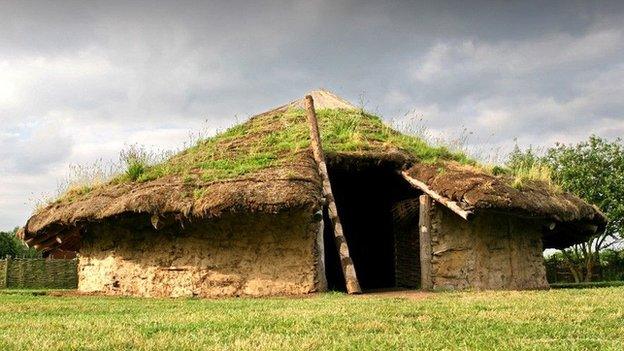Ceremony for Flag Fen Iron Age roundhouse
- Published
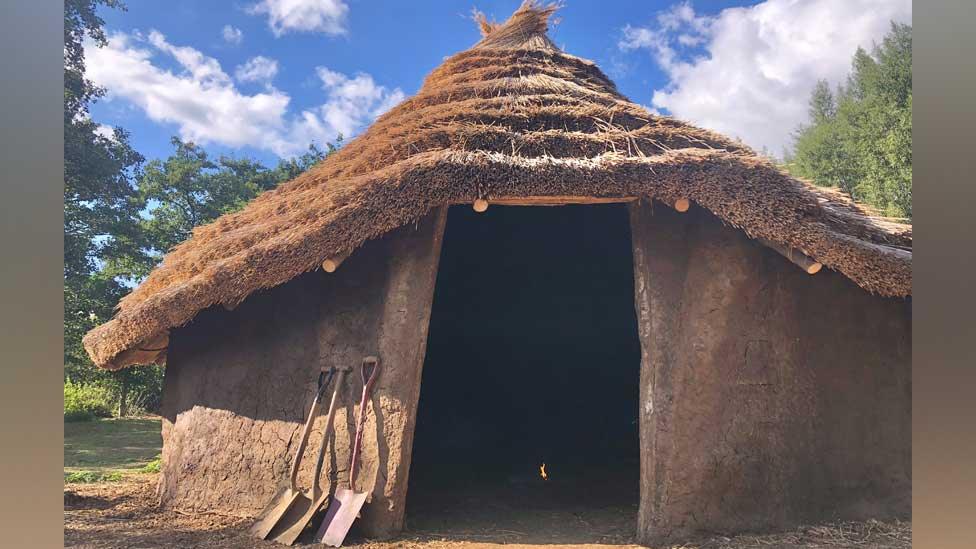
The Iron Age roundhouse exterior will be painted with white clay and red and yellow patterns
A "fantastic bunch of volunteers" have built a replica Iron Age roundhouse on a large Bronze Age causeway dating back 3,500 years.
The building at Flag Fen, near Peterborough, external, took six months to complete, using locally-sourced oak, ash and hazel.
General manager Jacqui Mooney said it had been "a real labour of love".
Time Team archaeologist Francis Pryor, who discovered Flag Fen in 1982, will lead a topping out ceremony later.
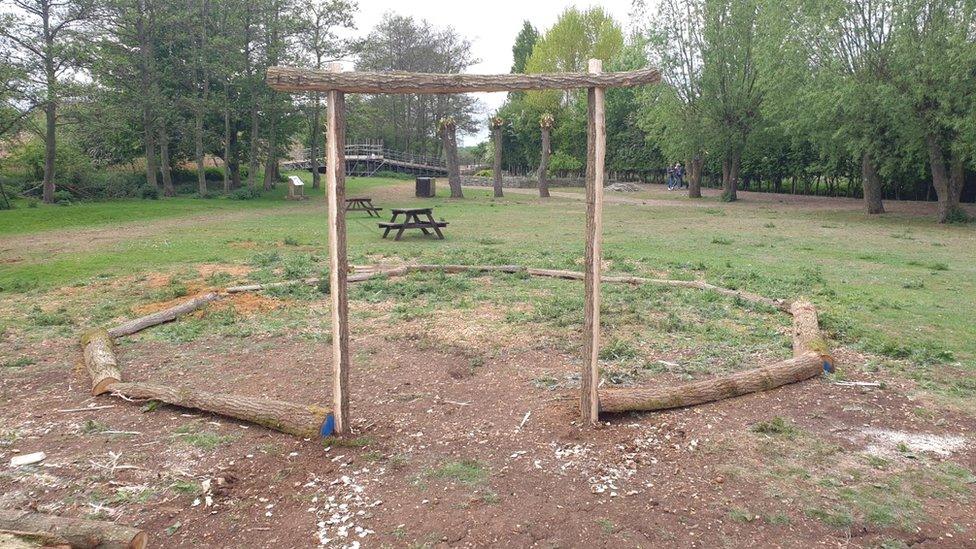
Building work took six months to complete and it replaces another replica that fell into disrepair some years ago
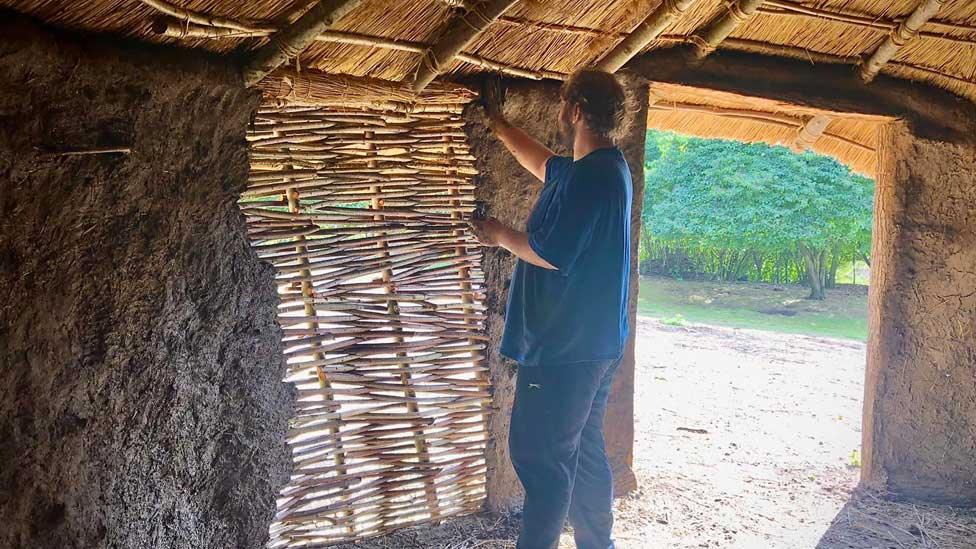
The interior will also be covered in white clay paint, iron oxide and ochre, in line with archaeological evidence
Mrs Mooney said: "There are lots of different designs of Iron Age roundhouses, they are not all the same.
"We based ours on one discovered at Cats Water, next to Flag Fen, in the 1980s."
The volunteers were led by expert builder David Freeman, who is Flag Fen's assistant general manager.
He learnt his skills at the experimental archaeology site Butser Ancient Farm in Chalton, Hampshire, external.
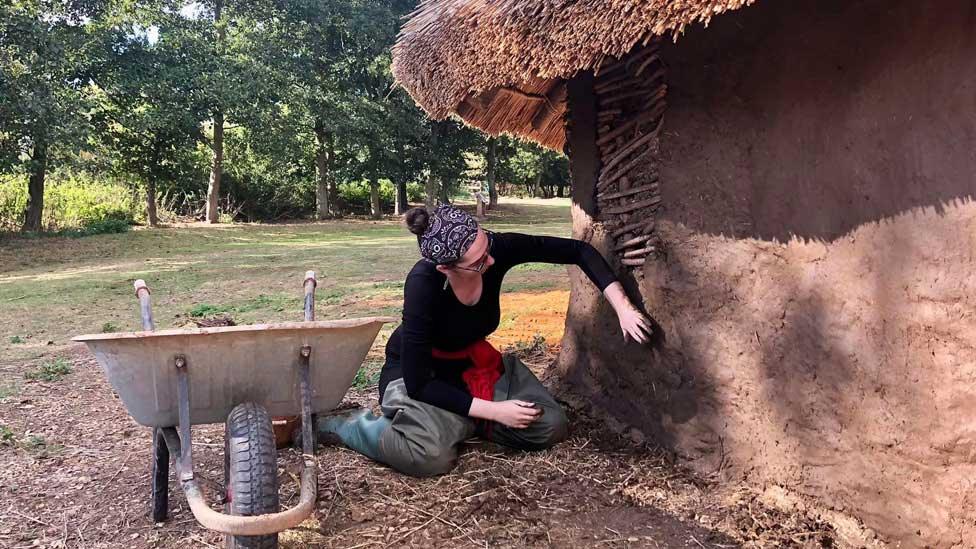
Jacquie Mooney said she was "just so thankful to the volunteers who helped build the house, some have been in every day"
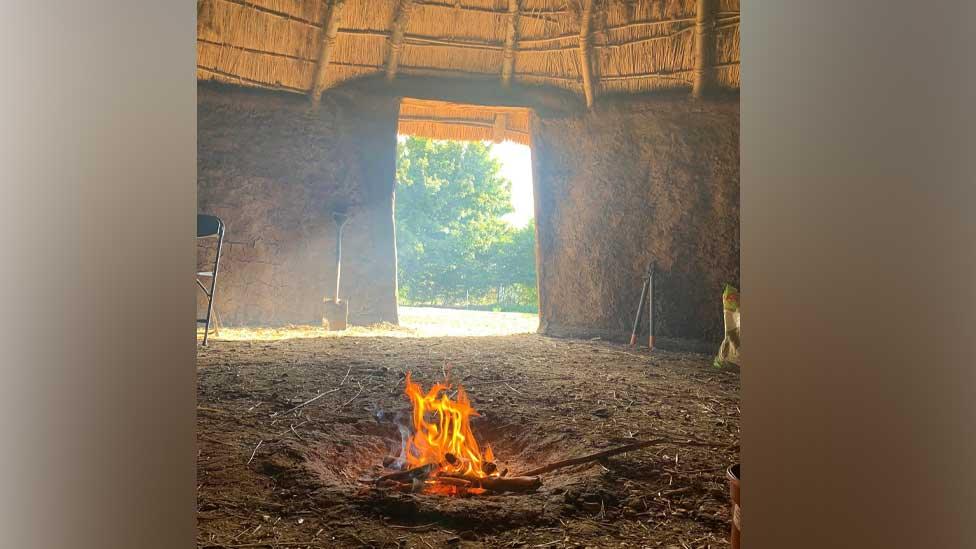
A fire will have to be lit in the roundhouse every week "to kill any bugs in the roof"
Mrs Mooney said: "We've been supported by a fantastic bunch of volunteers, about 20 at one stage, but Emma Bothamley, Arthur Randall and Katherine Piper have been just complete troopers in all weathers, hot or cold, working their socks off."
Flag Fen has been described as one of the most important Bronze Age archaeological sites in Britain, and its centrepiece is the remains of a stilted wooden causeway that was built over the marshy landscape.
Excavation of the causeway began in 1982 when millions of preserved timbers covering more than half a mile (0.8km) of Fenland were found.
"About 10,000 school children visit every year and they will now have an Iron Age roundhouse to visit alongside replica Stone Age and Bronze Age houses," she said.
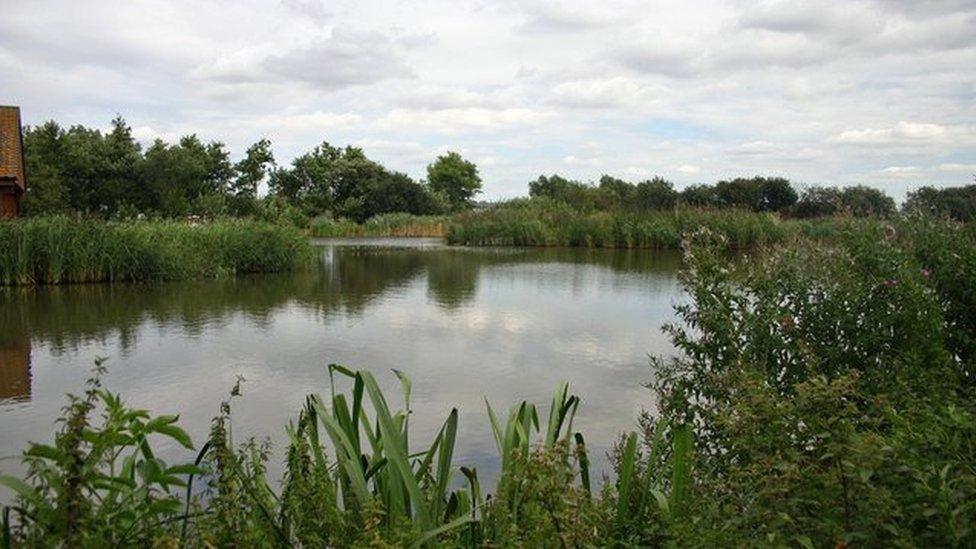
Many archaeological discoveries have been made at Flag Fen, including a timber causeway that used to stretch across the marshy fenland

Find BBC News: East of England on Facebook, external, Instagram, external and Twitter, external. If you have a story suggestion email eastofenglandnews@bbc.co.uk
Related topics
- Published5 May 2022
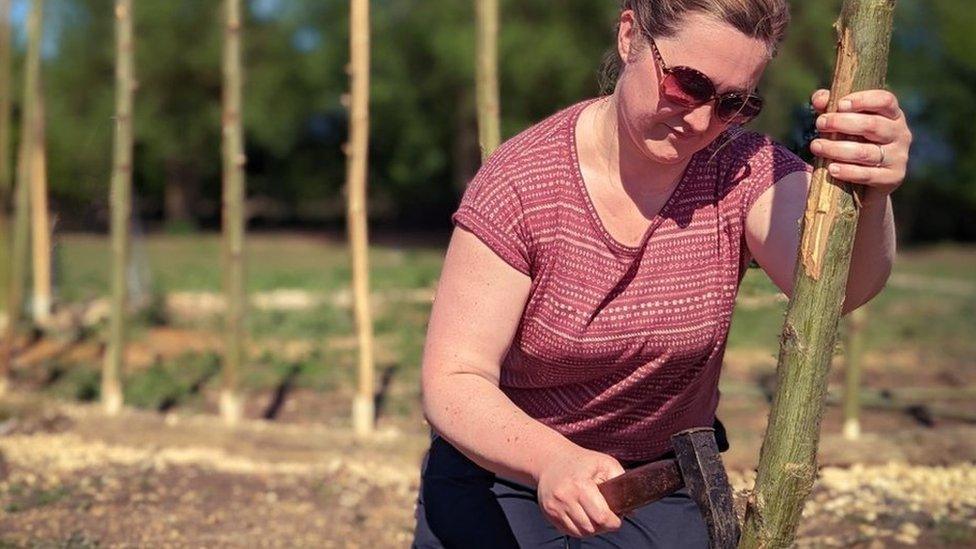
- Published24 March 2021

- Published26 July 2022

- Published16 August 2019

- Published9 August 2014
